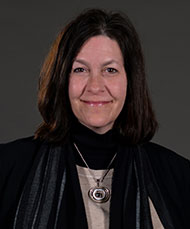Emissions reduction is aim of new funding
December 2022
 Guest column
Guest column
By Deb Barber, Met Council Transportation Committee chair
When Congress passes a major piece of legislation, it can be difficult to know what it means in your community. That was certainly the case with the $1.2 trillion transportation bill that passed in November 2021. It is a massive amount of money distributed nationally over a five-year period.
I’m going to focus on one specific category to give you an idea of how a huge national investment is felt in our region.
For the first time, Congress created a section in the transportation bill just for carbon reduction to slow climate change. This new funding made it possible for our region to be even more aggressive in developing certain projects that reduce carbon usage in transportation, such as bikeways and walkways across the Twin Cities. These projects are aimed at providing a safe multimodal option for people when deciding how to make a trip.
Here’s how the process works. When Congress passes a transportation bill, regions like the Twin Cities metro are allocated federal transportation funds by formula. The Met Council then works with the Transportation Advisory Board — made up of residents, business leaders and local elected officials — to come up with a plan to allocate those funds. The idea is to make local investments that result in an overall improvement in the region’s transportation system.
In this two-year funding cycle, $25 million was added to the total package of projects for carbon reduction. That gave us the ability to fund all 10 applications for the Safe Routes to School program, instead of four.
The new federal funds allowed us to approve another eight bike trails and sidewalk improvements. Apple Valley, Anoka, Victoria, Eden Prairie, Vadnais Heights, Mendota Heights, Chaska, Richfield, Bloomington, Falcon Heights, and Louisville Township in Scott County all saw approved projects because of the carbon reduction program.
A child walking or biking to school on a safe, designated path in Richfield benefits from the Infrastructure Investment and Jobs Act, as does a cyclist on the Rum River Trail in Anoka who will be able to use a safer railroad crossing.
Big, national investments are ultimately made on a local scale, and that’s why the work of our partners who serve on the Transportation Advisory Board and its committees is so important. They understand the issues facing the individual cities and counties who are applying for these federal funds, and they work together to set priorities that make sense for the region.